Introduction
- Florida Bay is located off the southern tip of Florida
- It is an estuary covering 1100 square miles
- Salinity is affected by freshwater flowing from the Everglades
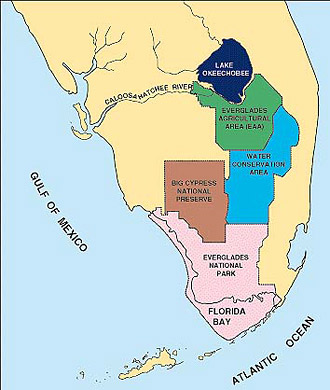
Florida Bay is an estuary covering approximately 1,100 square miles (2,850 square km) between the southern tip of Florida and the Florida Keys. It is located on a shallow shelf lagoon where freshwater from the Everglades mixes with the saltwater from the Gulf of Mexico. Inflow of fresh water into Florida Bay occurs through sheet flow across the southern Everglades.
However, water management practices have drastically altered the flow through the construction of canals, resulting in a 50% reduction of freshwater input over the past century. However, during the rainy season, freshwater enters Florida Bay from rainfall, surface runoff, and groundwater. This results in a salinity gradient across the bay, increasing in salinity from north to south. Portions of the bay often become hypersaline, with salinities reaching over 35 parts per thousand (ppt).
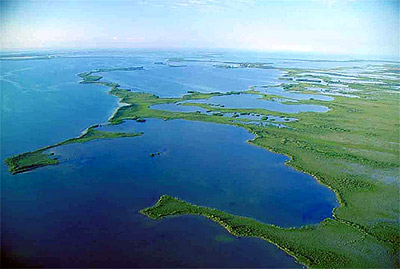
Habitats
- Seagrass
- Mangroves
- Hardbottom
Dominant habitats in the Florida Bay include seagrass meadows, mangrove islands, and hard bottom areas. Turtle grass (Thalassia testudinum) and manatee grass (Syringodium filiforme) are abundant, providing nursery areas for commercially important species of shrimp, lobster, and crabs.
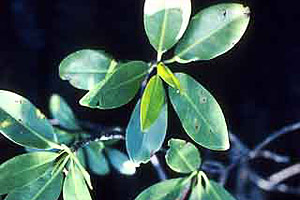
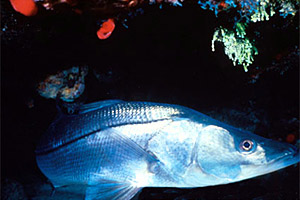
Mangroves also provide nurseries for reef fish and marine invertebrates as well as areas for nesting birds. Spotted seatrout (Cynoscion nebulosus), red drum (Sciaenops ocellatus), tarpon (Megalops atlanticus), snook (Centropomus undecimalis), barracuda (Sphyraena barracuda), sharks, and rays are abundant throughout these habitats.
Sponges and corals, along with queen conchs, spiny lobsters, and brittle stars, dominate the hardbottom communities that are common in the southern portion of Florida Bay. Mixed algal communities are also an important component of hard bottoms, stabilizing sediments and providing habitat for small fish and invertebrates.
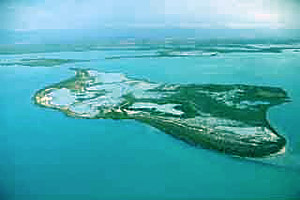
Glossary terms on page
- estuary: area where freshwater meets the sea, creating a salinity gradient from pure freshwater (0 ppt) to full-strength seawater (35 ppt).
- salinity: concentration of total salts dissolved in water, usually measured in parts per thousand.
- hypersaline: Water with excessive or supersaturated salt content.